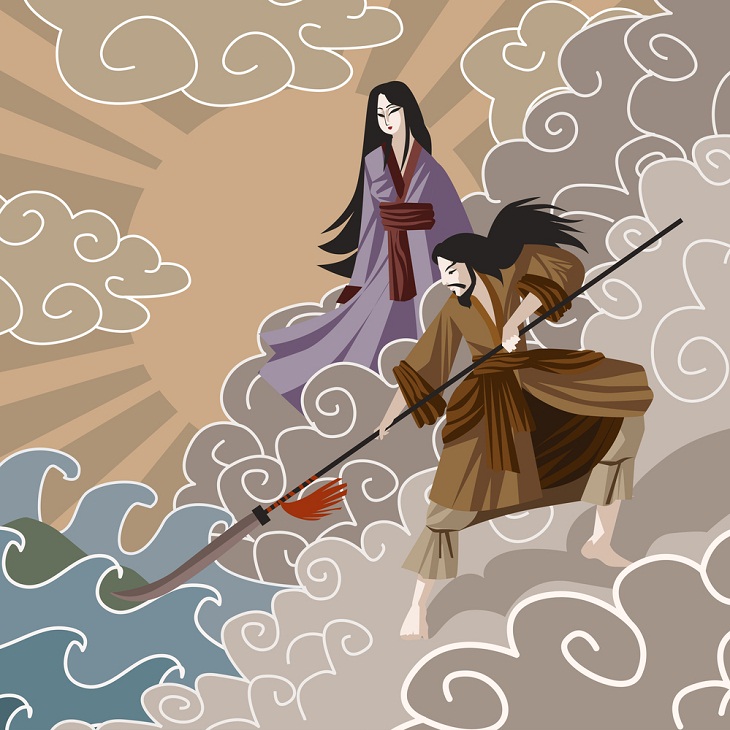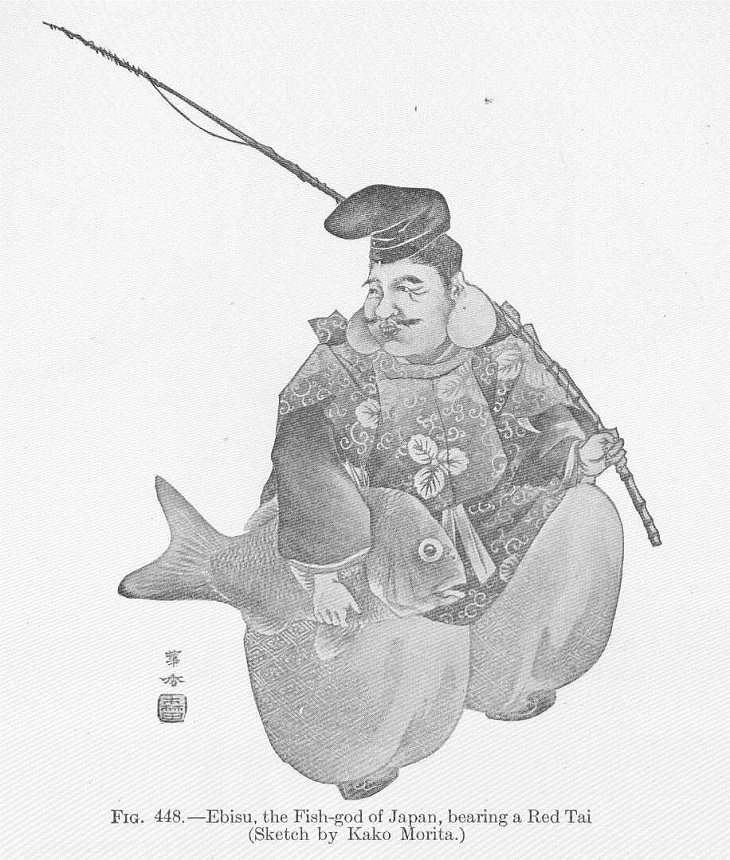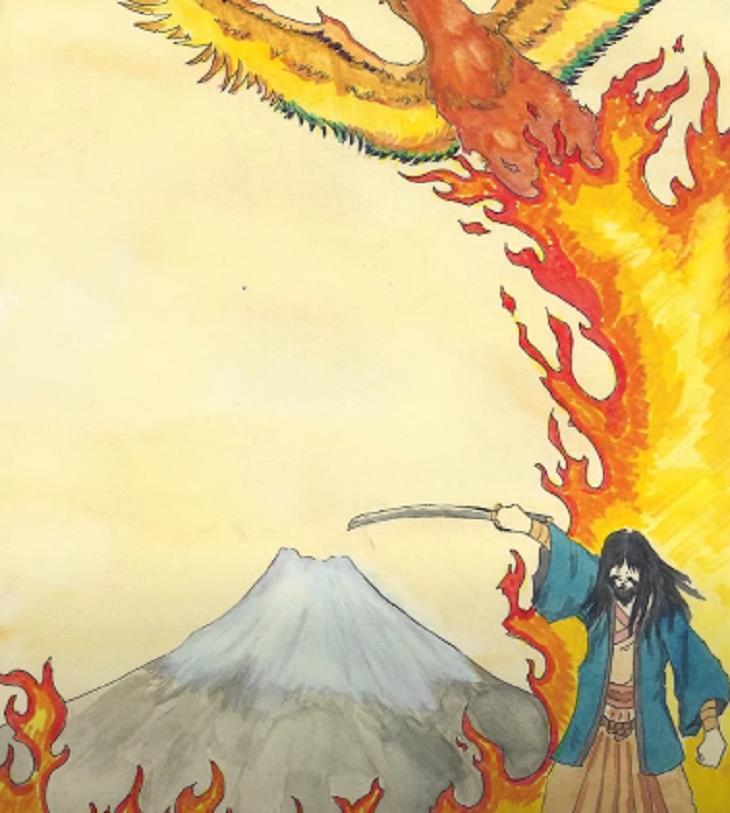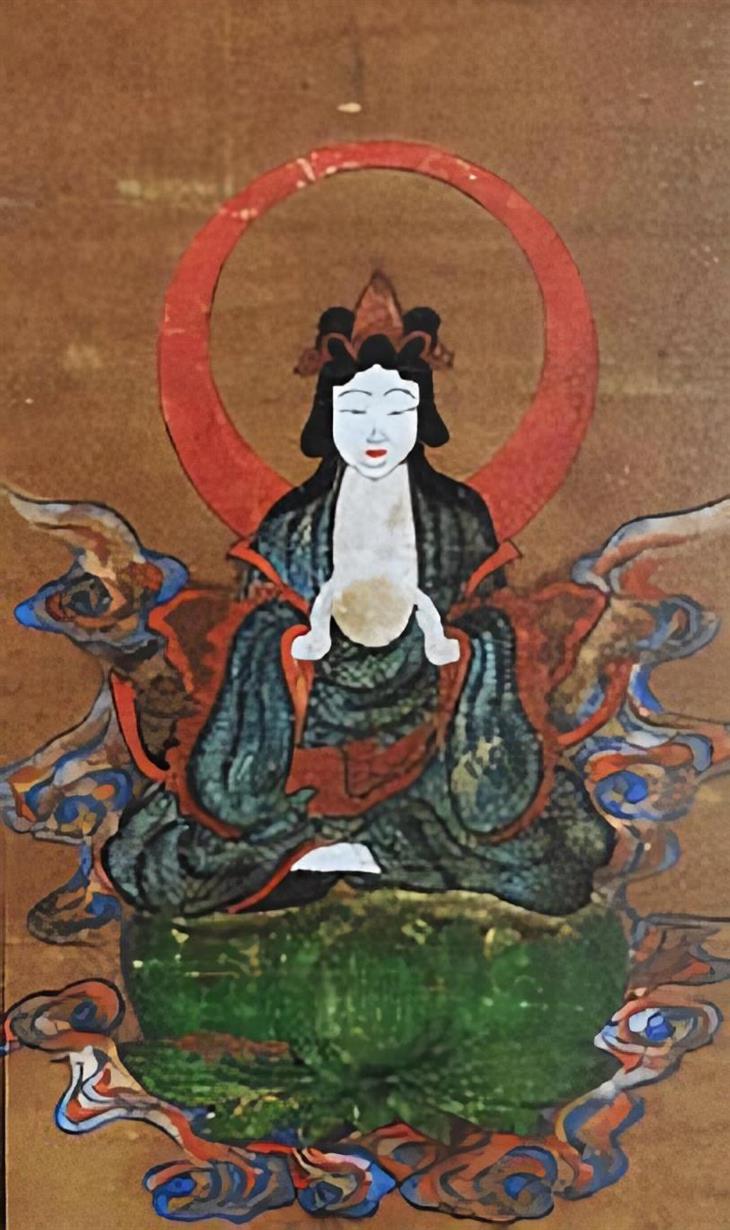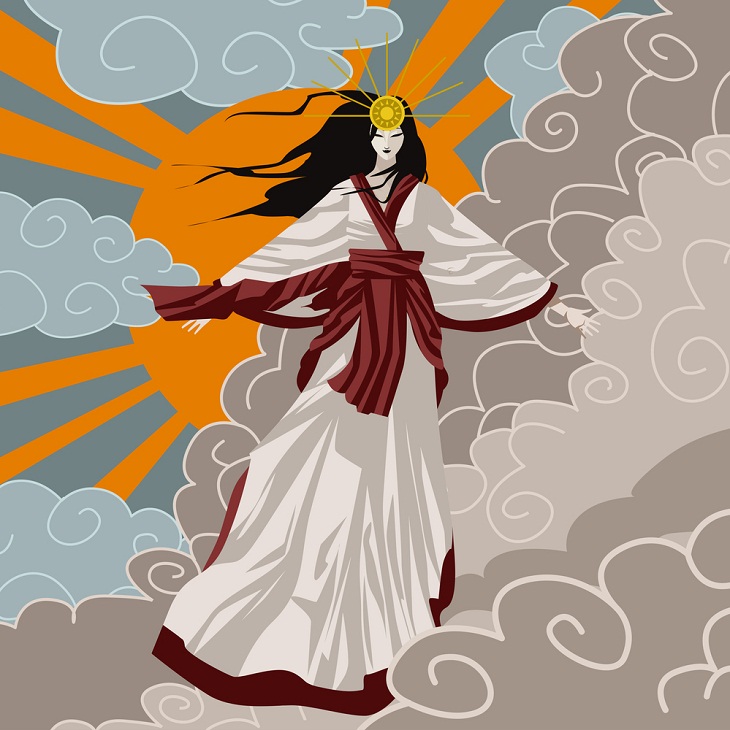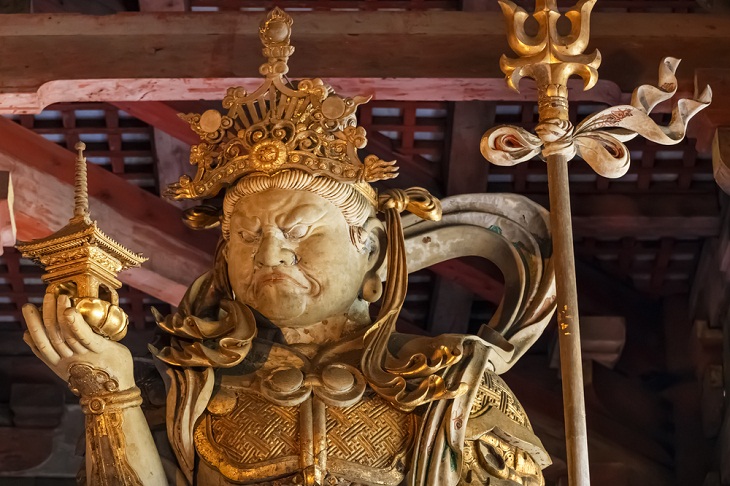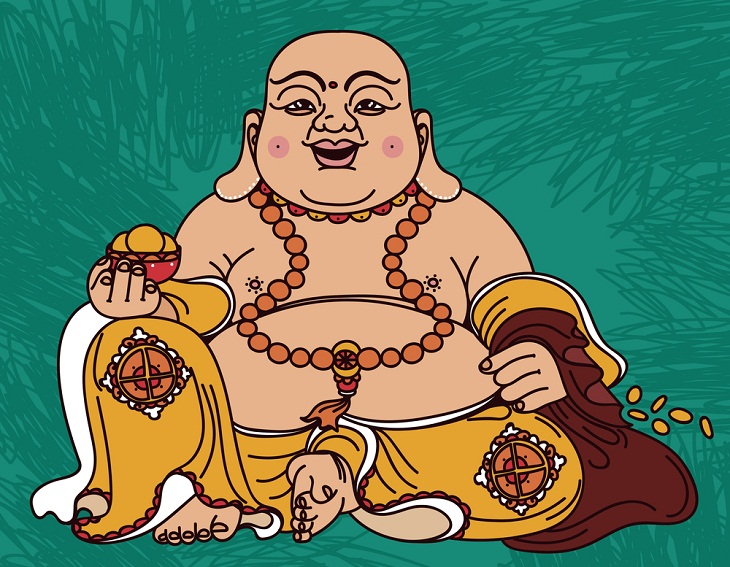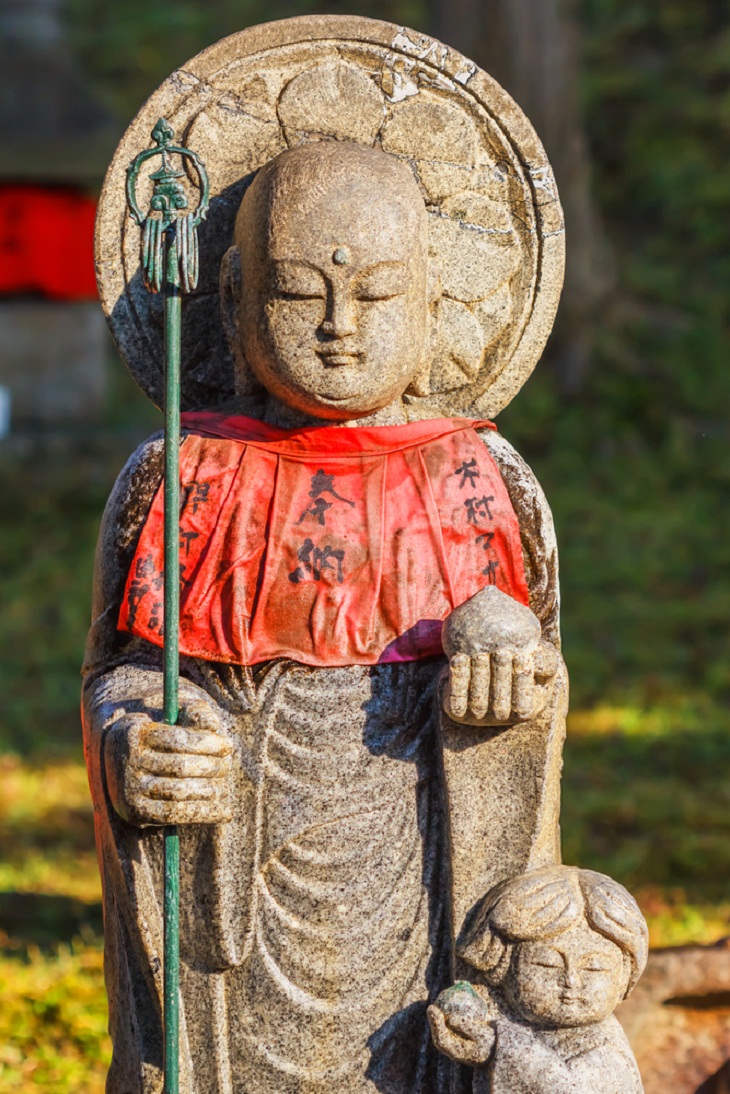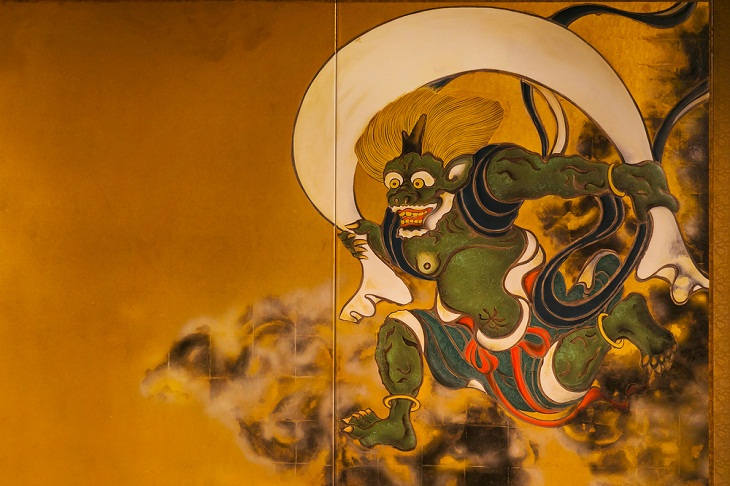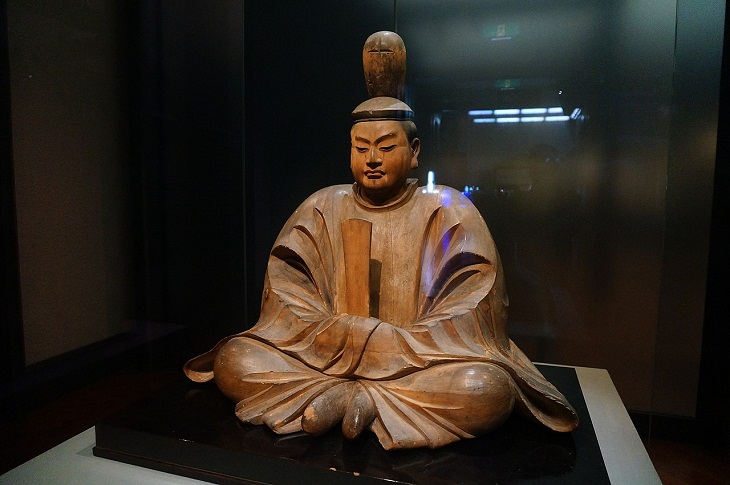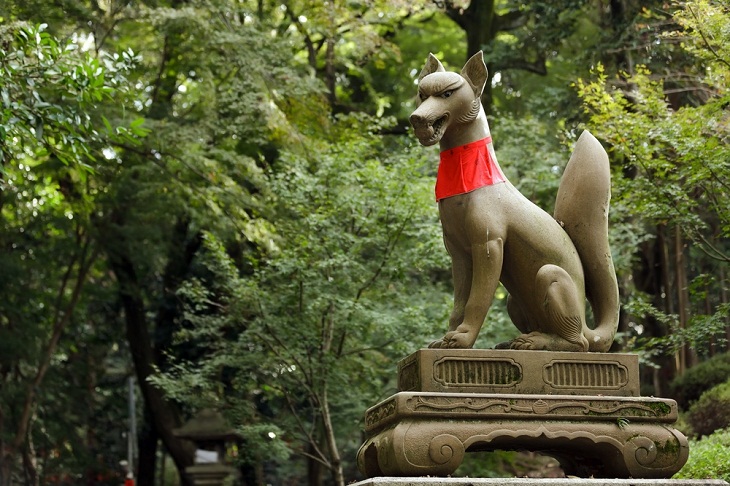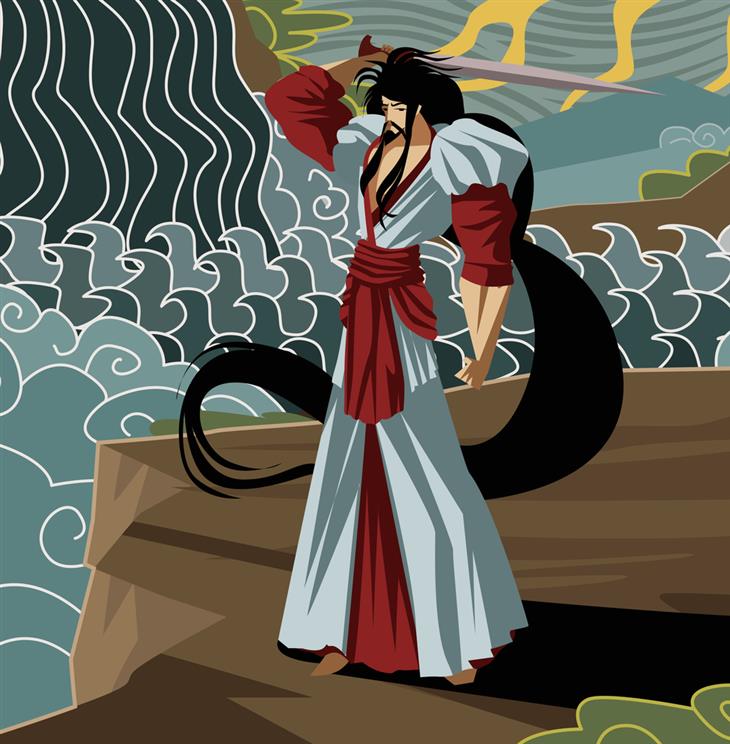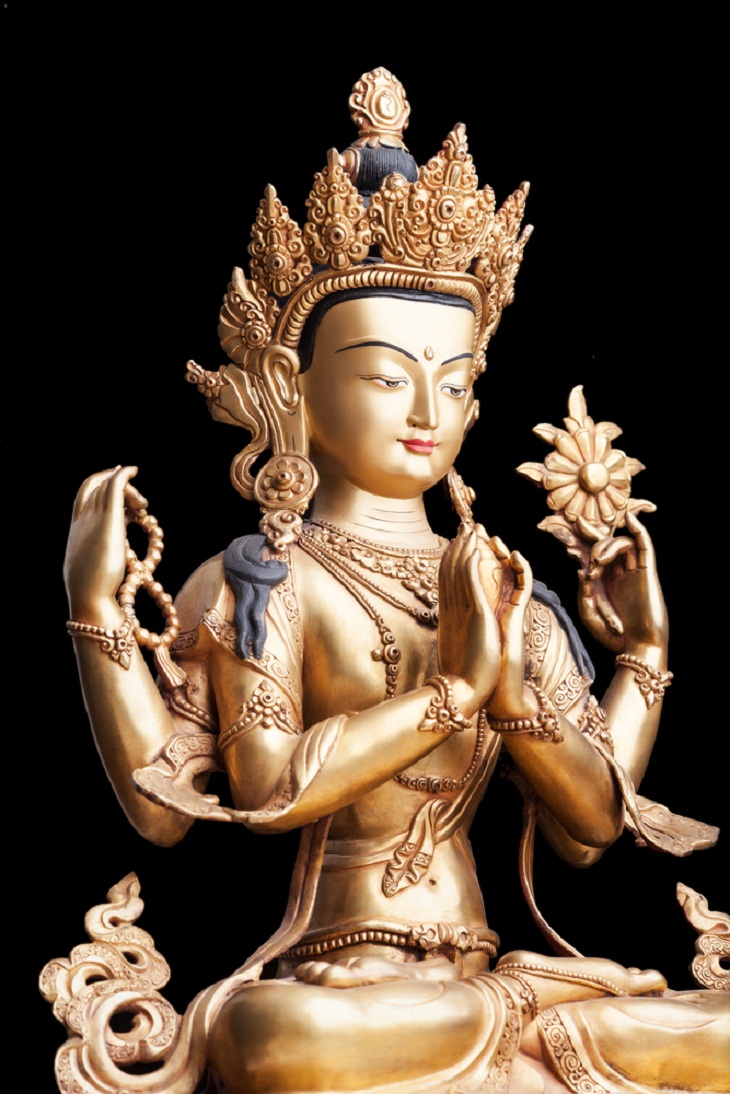In Japanese mythology, Izanami and Izanagi are considered the primordial gods of creation, responsible for bringing the world into existence. According to legend, these divine beings were tasked with creating the islands of Japan and populating them with life.
Izanami, the female deity, is related to the underworld and death, while Izanagi, the male deity, is associated with the heavens and life. Together, they represent the complementary forces of creation and destruction, and their union is believed to have brought forth the first deities of the Japanese pantheon.
Izanami and Izanagi are thought to have created the islands of Japan by stirring the ocean with a spear. As the water dripped from the spear, they formed the islands of Japan. The two deities then descended on the newly formed land to begin the task of creating life.
Despite their divine status, Izanami and Izanagi were not without flaws. The two gods engaged in a ritualistic mating, during which Izanami gave birth to a fire deity, ultimately leading to her death. In her grief, Izanagi descended to the underworld to try and rescue her, but he was unable to bring her back to the world of the living. This tragic event marked the beginning of the cycle of life and death. It is said to have had a profound impact on the Japanese people's perception of the afterlife.
2. Ebisu – The God of Fishermen and Luck
Ebisu is a Japanese god of luck and fishermen. He is one of the Seven Gods of Fortune in Japanese mythology and is revered as a patron of the sea and those who make their living from it.
Ebisu is usually depicted as a jovial, rotund figure with a wide grin and a fishing rod. He is said to have been born with physical deformities that made him unfit for physical labor, which led him to become a fisherman instead. Despite his disability, he has a natural talent for fishing and was able to provide for himself and his family.
In Japanese culture, Ebisu is seen as a symbol of good luck and prosperity and is often worshipped by those in the fishing industry. It is said that offering prayers and gifts to Ebisu can bring good fortune and a bountiful catch.
Ebisu has been featured in various forms of Japanese art, including woodblock prints and statues. His image has become a popular symbol of good luck in Japanese culture and is often used in advertising and promotional materials. Today, Ebisu continues to be revered as the god of luck and prosperity. His influence can be seen in various aspects of Japanese society, from the fishing industry to everyday life.
3. Kagutsuchi – The God of Fire
Kagutsuchi, also known as Homusubi, is a Japanese god of destructive fire. He is the son of the primordial deities, Izanami and Izanagi, and is venerated as one of the most powerful and dangerous gods in the Japanese pantheon.
Kagutsuchi is a fierce and fearsome god, with flames emanating from his body and a fiery sword in his hand. He is said to have been born during a difficult childbirth, which caused his mother, Izanami, to die from her injuries. In her grief, Izanagi cut Kagutsuchi into pieces with his sword, giving rise to the many volcanoes and hot springs in Japan.
Despite his destructive nature, Kagutsuchi was still worshipped by the Japanese people as a powerful and influential deity. It is said that offerings and prayers to Kagutsuchi could appease his wrath and prevent destructive fires from occurring. In some cases, he was even worshipped as a god of fertility and childbirth, due to his connection with the creative power of fire.
Kagutsuchi has been portrayed in different forms of Japanese art and literature throughout history, including woodblock prints and Noh theater. His image has become synonymous with the destructive power of nature and serves as a reminder of the importance of respecting the forces of the natural world.
4. Tsukiyomi - The Moon God
Tsukiyomi is a well-known deity in Japanese mythology, celebrated as the god of the moon. It's said that he was born from the right eye of the primordial god, Izanagi, during his purification ritual after his journey to the underworld. Tsukiyomi is thought to have been tasked with governing the realm of the moon and is closely related to beauty, serenity, and the cycles of nature.
Tsukiyomi is a serene and contemplative figure with a calm and composed demeanor. He is often shown carrying a bow and arrow, symbolizing his role as a hunter and protector of the natural world. Additionally, Tsukiyomi is linked to timekeeping and the moon's cycles and is believed to have contributed considerably to the development of the Japanese lunar calendar.
Tsukiyomi has been portrayed in various forms of Japanese art and literature, including poetry, painting, and sculpture. His image has gained popularity as a representation of the grace and peace of the moon and is frequently utilized in branding and advertising in contemporary Japan.
5. Amaterasu – The Sun Goddess
Amaterasu is a central figure in Japanese mythology and is idolized as the sun goddess, the queen of heaven, kami (a noun meaning 'god' in Japanese), and creation itself. She is the daughter of the primordial deities, Izanami and Izanagi, and the elder sister of Susano-o, the god of storms and the sea.
Amaterasu is a radiant and powerful figure, with the sun as her symbol and the source of her immense power. She represents light, purity, and the sun's creative power. One of the most famous stories about Amaterasu involves her getting into a feud with her younger brother, Susanoo, which caused darkness and chaos to fall over the world. She was so enraged that she hid in a cave, refusing to come out no matter what the other gods and goddesses tried. They danced, played music, and even offered her food, but nothing worked...until the goddess of dawn, Uzume, performed a lewd dance in front of the cave. Everyone laughed so hard that Amaterasu was curious enough to peek out. When she did, the other gods and goddesses pulled her out of the cave, bringing light and life back to the world.
Amaterasu is also connected to the Japanese imperial family, who trace their lineage back to her. Today, she remains a symbol of the sun's power and the importance of light and purity in Japanese mythology and everyday life.
6. Bishamonten – The God of War
Bishamonten is known as the god of war and fortune in Japanese culture and is seen as the protector of Buddhist temples and shrines. He is thought to be one of the Four Heavenly Kings, powerful Buddhist deities tasked with guarding the cardinal directions and protecting the world from evil.
Bishamonten is usually seen in armor and with a spear, symbolizing his role as a protector and defender of the Buddhist faith. In addition to wealth and prosperity, he is said to bring good fortune to those who venerate him. Bishamonten once fought against the demon king, Vaisravana, and emerged victorious, demonstrating his remarkable strength and prowess in battle.
Bishamonten has long been idolized by warriors and military leaders. He represents the enduring power of the Buddhist faith in Japan, embodying strength, courage, and perseverance in the face of adversity.
Bishamonten’s influence can be seen in many aspects of Japanese culture, including martial arts, which frequently incorporate his image and teachings. He is also related to prosperity and good fortune and is often worshipped by those seeking success in business and other endeavors.
7. Hotei - God of Contentment and Happiness
Hotei, also known as the "Laughing Buddha," is a benevolent Japanese god who is treasured as a symbol of luck and good fortune. Generally, he is depicted as having a large belly, a cheerful expression, and a bag of treasures over his shoulder. Basically, he's like the Japanese version of Santa Claus. Legends say that Hotei was a wandering monk who traveled throughout Japan, spreading joy and happiness wherever he traveled. It's also believed that Hotei would give gifts to children and those in need.
This popular figure is related to fortune, prosperity, and happiness. People often rub his belly for good luck, which is a pretty fun tradition in Japan.
Tradespeople and those aspiring to succeed in business have long worshipped Hotei. The Laughing Buddha is a symbol of the enduring power of the Buddhist faith in Japan, and he reminds people to be generous, abundant, and joyful.
8. Jizo – The Guardian Deity of Children and Travelers
Jizo is one of Japan's most beloved bodhisattvas (a Buddhist deity who has attained the highest level of enlightenment, to save others), known for his role as a protector of children and the dead. He is a monk-like figure with a shaved head and robes, holding a staff and a wish-granting jewel. Jizo was tasked with helping souls navigate the afterlife, guiding them through the trials and tribulations of the underworld.
Jizo is known to be the protector of children, especially those who died when they were young or in tragic circumstances. He is often depicted with a group of children surrounding him, or with toys and other offerings laid at his feet. Parents who have lost children often venerate Jizo, seeking his protection and guidance in navigating the difficult journey of grief.
Jizo is also idolized by those who have experienced loss or hardship. During times of suffering, the popular god provides comfort and protection for his devotees.
9. Fujin - The Japanese God of the Wind
Fujin is the Japanese god of the wind, revered for his frighteningly powerful abilities and his status as a neutral deity. He is a wild, beast-like figure with a ferocious expression, wild hair, and a bag slung over his shoulder containing the winds he controls. Fujin was tasked with controlling the winds that sweep across the land, using his power to bring both destruction and renewal.
The interesting aspect of Fujin is that he is neither virtuous nor evil, but rather a powerful force of nature, one that must be revered and respected. He reminds the Japanese of the need to respect nature's enormous might and power.
Fujin is usually worshipped by those who rely on the winds for their livelihood or who are affected by natural disasters. He is also idolized by those who seek strength and protection in the face of life's difficulties. There are numerous temples and shrines in Japan dedicated to Fujin, and he is involved in several rituals and festivals throughout the year. He is also sometimes depicted alongside other deities, including Raijin, the god of thunder, with whom he shares a close relationship.
10. Hachiman - Japanese God of War and Archery
Hachiman is a Japanese god of war and archery, known for his fierce combat skills and his protection of those in battle. As a god of war, he is often depicted wearing armor and wielding a bow and arrow, ready to defend his worshippers from their enemies. Aside from his military prowess, Hachiman is also involved in the arts and is regarded as a patron of writers, musicians, and other creative types.
Hachiman was originally worshipped as a local deity in the Kyushu region of Japan; he was thought to have been born to Empress Jingu, a legendary figure in Japanese mythology. Over time, his popularity spread throughout the country, and he came to be associated with the Emperor and the Imperial family. During the Heian period (794-1185), Hachiman was officially recognized as a national deity and was revered as the protector of the Japanese people.
Hachiman is celebrated in Japan as a powerful deity and a symbol of courage and strength. Many Japanese martial arts practitioners also consider him to be their patron, seeking his guidance and protection as they hone their combat skills. Hachiman remains a prominent figure in Japanese mythology and an enduring symbol of the country's warrior culture.
11. Inari - The God Associated With Foxes, Fertility, and Agriculture
Inari is one of the most significant and widely worshipped deities in Japanese mythology, known for his/her association with agriculture, fertility, prosperity, and foxes. This multi-faceted deity is often depicted as a fox, or as a human with fox-like features and is considered to be both male and female, depending on the context.
Many of Inari's temples are situated within rice fields, which are considered to be Japan's most important crop. The rice produced in these fields is considered to be blessed by the deity and is used in various offerings and rituals. Inari is also seen as the patron of agriculture and is believed to provide farmers with a bountiful harvest. Due to Inari's role as a deity of fertility, she is also linked to childbirth and is often worshipped by couples seeking to conceive a child.
In addition to his/her association with agriculture and fertility, Inari is widely regarded as a deity of prosperity and good fortune. Many businesses and entrepreneurs in Japan worship Inari to seek his/her blessings for success and wealth. Inari is also thought to have the power to ward off misfortune and protect his/her devotees from harm. In some legends, the deity is described as being mischievous and cunning, as well as possessing the power to change form.
Inari's influence extends beyond Japan, with his/her image and legends being popularized in other parts of the world. Inari's rich mythology and affiliation with various aspects of life make him/her an essential deity in Japanese culture and a fascinating figure in world mythology.
12. Susanoo - The God of the Sea and Storms
Susanoo is a powerful and complex deity in Japanese mythology, associated with storms, the sea, and agriculture. He is regarded as a powerful god in the Shinto pantheon and is portrayed as a fierce warrior with a fiery temper. Despite his volatile nature, Susanoo is a prominent and respected deity, and his myths and legends have had a lasting impact on Japanese culture and religion.
Legends say that Susanoo was born from the nose of the primordial god, Izanagi, during his cleansing ritual after visiting the underworld. This connection with death and purification has given Susanoo a reputation as a god of transformation and rebirth. He is also known for his fierce battles against his enemies. He is said to have slain a powerful dragon named Yamata no Orochi, which had been terrorizing the people of Japan.
Susanoo is also linked to the sea, which is a significant element in Japanese culture and mythology. Known for controlling winds and waves, he is sometimes depicted riding a dragon or a giant fish as the god of storms. He is also known as the god of agriculture and is credited with introducing various farming techniques to the people of Japan.
Susanoo, despite his violent nature, is thought to have a compassionate side. In one legend, he rescues a young woman from a dragon by killing the beast and marrying the woman himself. This act of kindness is seen as an example of Susanoo's protective and nurturing qualities. It has helped to cement his status as a powerful and multifaceted deity in Japanese mythology.
13. Kannon - The Goddess of Mercy
Kannon is one of the most beloved and popular figures in Japanese Buddhism, celebrated as the goddess of compassion and mercy. As a bodhisattva, Kannon is thought to have attained enlightenment but chose to remain on earth to help guide and protect all beings. Her gentle and compassionate nature has made her an invaluable symbol of hope and comfort for many people in Japan and beyond.
Kannon is typically depicted in a variety of forms, each with its own distinct symbolism and significance. In her most common form, she is shown with multiple arms and eyes, representing her ability to see and help all beings. She is frequently seen holding a vase of water, symbolizing compassion's cleansing and healing powers, as well as a lotus flower, which represents purity and enlightenment.
Many people in Japan turn to Kannon for protection and guidance in times of difficulty or hardship. Her compassionate nature is believed to extend to all beings, regardless of their background or circumstances. Consequently, she is often portrayed as a figure of comfort and support, helping to alleviate suffering and giving hope in challenging circumstances.
Her image can now be found in many Japanese temples and shrines, as well as in homes and personal altars. Kannon continues to hold a special place in the hearts of many people in Japan and beyond, whether as a symbol of hope, compassion, or spiritual guidance.

